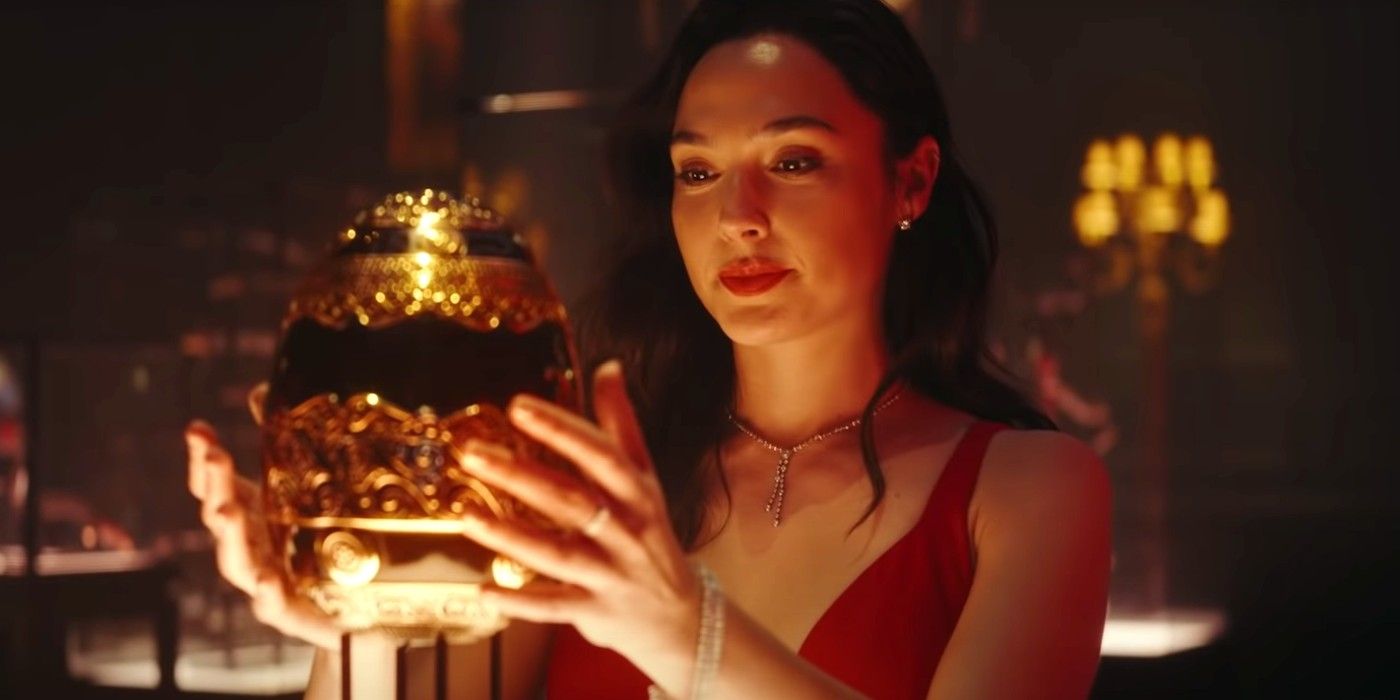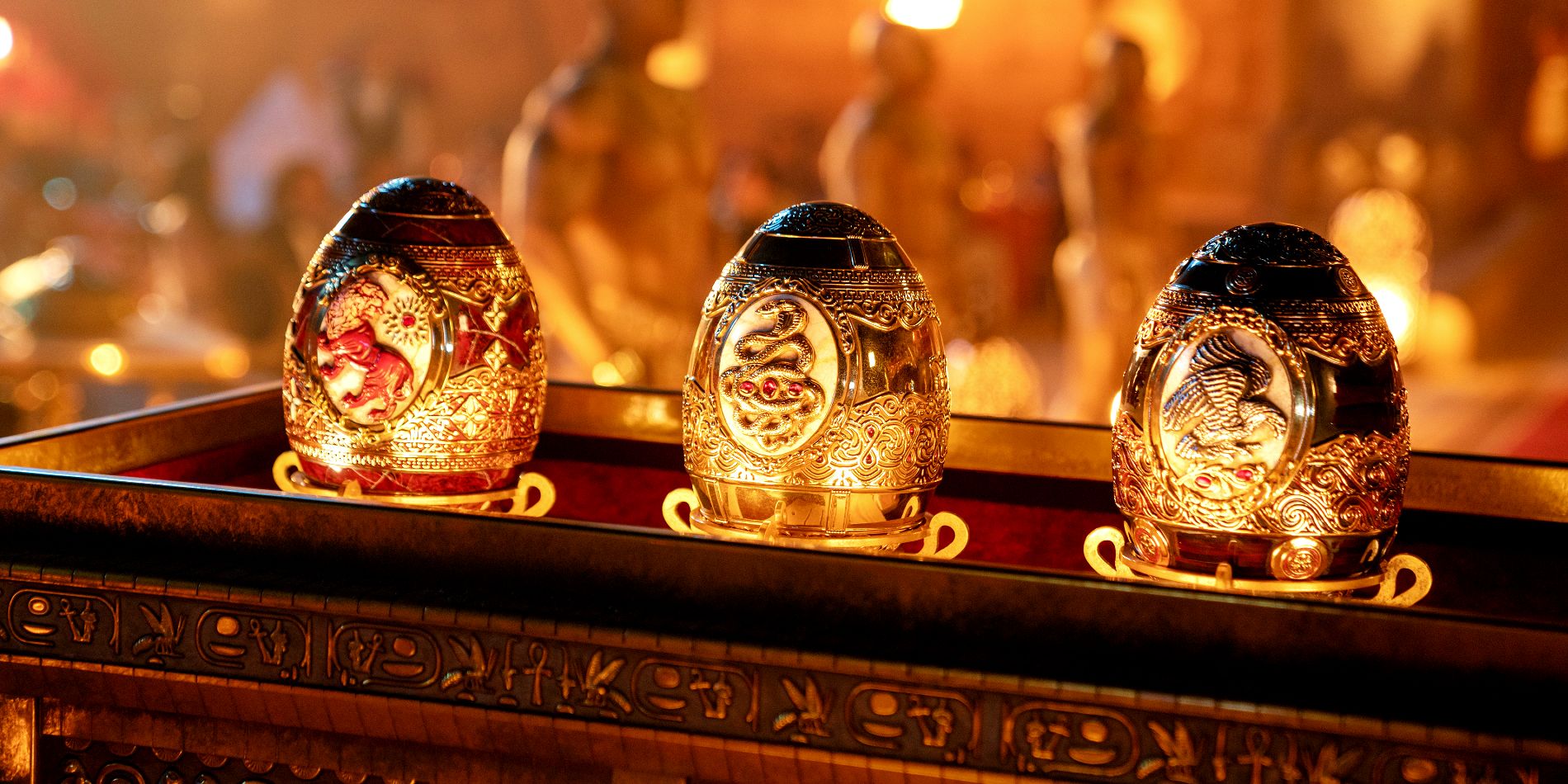Here is the true story of Cleopatra's three eggs from Red Notice and if they are real. The Netflix heist flick follows John Hartley (Dwayne Johnson) who, in an attempt to stop famed crook Nolan Booth (Ryan Reynolds) from stealing priceless antiquities, gets framed for their theft himself. Forced to form a reluctant duo, Hartley and Booth escape prison and go after the Bishop (Gal Gadot) together in order to recover the artifacts for themselves.
The valuable items being pursued by the Red Notice characters are Cleopatra's three eggs, said to have been gifted to her by Mark Antony himself before their deaths. The eggs were separated throughout history, with one being housed in the Castel Sant'Angelo in Rome, one in the possession of an arms dealer in Valencia, and one becoming lost to time, though it's later revealed to be in a hidden cache of stolen Nazi art. The thieves aim to reunite the treasures for a benefactor who will pay $300 million for the full set.
Cleopatra's eggs serve as a convincing treasure for the film, but in reality, they're entirely fictitious. The most illustrious queen of Egypt brings significant intrigue to any treasure with her name attached to it, so it makes for an enjoyable story. The eggs were likely also inspired by the famously valuable Fabergé eggs of the Russian Tsars.
The plot of Red Notice focuses on the eggs and their attachment to Cleopatra and Mark Antony. As two of history's most prominent, opulent, and tragic lovers, it makes sense that the writers would borrow from pieces of their story to lend historical significance to the fictional treasure. To bolster the intrigue, the tomb of Antony and Cleopatra has never been found, though it's still theorized to exist somewhere in the Alexandria area. Therefore, it's theoretically possible that the discovery of the tomb could unearth real lost treasures of the doomed couple, be they decorative eggs or otherwise.
There are, however, real-life eggs that could explain the inspiration for the Red Notice versions. Between 1885 and 1917, Peter Carl Fabergé crafted a set of ornate, intricately adorned eggs for Tsars Alexander III and Nicholas II of Russia. After the Bolshevik Revolution, many of the eggs were lost or scattered around the globe, but those that have been recovered maintain both immense beauty and value. The writers of Red Notice must certainly have been inspired by these treasures when they invented Cleopatra's eggs.
So although the three eggs of Cleopatra are fake, they seem to be something of a combination of the fascinating lore around Antony and Cleopatra's relationship and the intrigue of the famous Fabergé eggs. The high-budget targets in Netflix's Red Notice also play on a classic trope of historical antiquities, the divided set that's destined to be reunited one day at enormous monetary value. It makes audiences wonder what treasures they'll come up with next for the hopeful Red Notice sequel.


